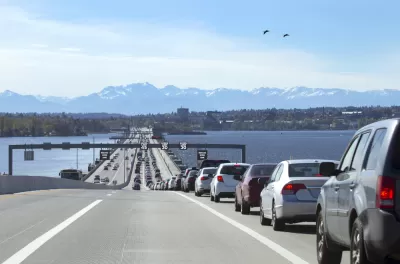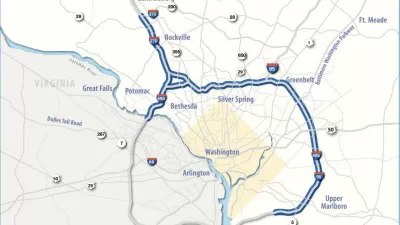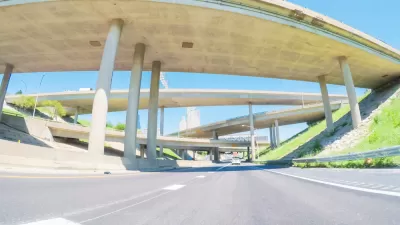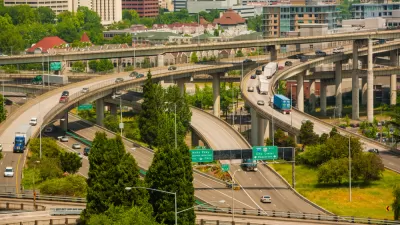Despite broader intentions, federal economic relief continues to get redirected to automobile-focused infrastructure.

Washington State has one of the most aggressive approaches to climate change in the nation and a governor who promotes a climate-friendly agenda. The same governor, however, also wants to funnel a federal windfall to automobile infrastructure.
"Gov. Jay Inslee wants to use a half-billion dollars in federal pandemic relief money to keep up with rapid cost increases on the Highway 520 bridge replacement, and widenings for [Seattle's] combined Interstate 405/Highway 167 program," reports Mike Lindblom for the Seattle Times.
According to Lindblom, both projects are behind schedule. The need for more funding to get the projects across the finish line inspired the governor and state legislators to consider a gas tax increase in 2021 and approve a carbon pricing scheme that will go into effect in 2023.
In a noteworthy twist in how the article is framed, Lindblom compares the increasing costs of highway construction in Washington State to the more widely documented troubles the state is having keeping costs down for capital investments in the public transit sector.
Highway inflation isn’t as well-known as Sound Transit’s current $6.5 billion funding shortfall in three counties, blamed largely on land prices and estimating errors. They’re related, because Sound Transit’s Stride bus rapid transit on I-405, which voters approved to begin in 2024, is already delayed until 2027 or 2028, and would slip further if the state loses more time on I-405 roadbuilding that provides bus-entrance lanes, and new toll lanes where buses could move fast along the freeway.
Linblom also notes the opportunity cost of using the federal funding from the American Rescue Plan for behind schedule, over budget highway widening projects: "those are dollars states may apply to other infrastructure such as water and sewer projects, or even human services."
More details about the history of the Highway 520 bridge and Interstate 405/Highway 167 programs are included in the source article below.
FULL STORY: Cost jumps for Highway 520 bridge work; here’s why, and where the money could come from

Maui's Vacation Rental Debate Turns Ugly
Verbal attacks, misinformation campaigns and fistfights plague a high-stakes debate to convert thousands of vacation rentals into long-term housing.

Planetizen Federal Action Tracker
A weekly monitor of how Trump’s orders and actions are impacting planners and planning in America.

San Francisco Suspends Traffic Calming Amidst Record Deaths
Citing “a challenging fiscal landscape,” the city will cease the program on the heels of 42 traffic deaths, including 24 pedestrians.

Defunct Pittsburgh Power Plant to Become Residential Tower
A decommissioned steam heat plant will be redeveloped into almost 100 affordable housing units.

Trump Prompts Restructuring of Transportation Research Board in “Unprecedented Overreach”
The TRB has eliminated more than half of its committees including those focused on climate, equity, and cities.

Amtrak Rolls Out New Orleans to Alabama “Mardi Gras” Train
The new service will operate morning and evening departures between Mobile and New Orleans.
Urban Design for Planners 1: Software Tools
This six-course series explores essential urban design concepts using open source software and equips planners with the tools they need to participate fully in the urban design process.
Planning for Universal Design
Learn the tools for implementing Universal Design in planning regulations.
Heyer Gruel & Associates PA
JM Goldson LLC
Custer County Colorado
City of Camden Redevelopment Agency
City of Astoria
Transportation Research & Education Center (TREC) at Portland State University
Jefferson Parish Government
Camden Redevelopment Agency
City of Claremont





























